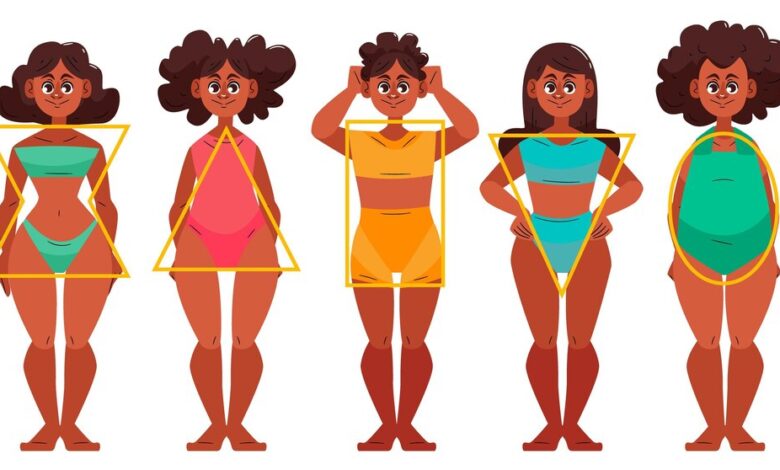Unusual award n.13: extreme gluteal proportions in african woman

Throughout history, human beings have celebrated various physical traits, from height and strength to unique facial features. In recent times, unusual body proportions have gained attention as well. Among the many fascinating physical attributes across different cultures and regions, one characteristic that stands out is the extreme gluteal proportions observed in some African women. This feature, often admired and sometimes controversial, has sparked discussions in anthropology, fashion, and even beauty standards worldwide. This article explores the genetics, cultural significance, and societal perceptions surrounding extreme gluteal proportions, particularly in African women, while also addressing common questions and misconceptions about this phenomenon.
Genetics Behind Extreme Gluteal Proportions
One of the primary factors contributing to extreme gluteal proportions in African women is genetics. Studies suggest that certain populations, especially those from sub-Saharan Africa, possess genes that lead to increased fat storage in the hips and buttocks. This genetic predisposition is an evolutionary adaptation that may have historically provided advantages such as energy storage during times of food scarcity. The trait is most commonly associated with steatopygia, a condition where excessive fat accumulates in the buttocks, creating an exaggerated curvature. This feature is particularly prominent among the Khoisan and Bantu ethnic groups, although it is also observed in other regions.
Cultural Significance and Beauty Standards
The perception of beauty varies widely across cultures, and in many African societies, fuller, well-proportioned bodies are traditionally viewed as attractive and desirable. Unlike in Western societies where thinness has often been idealized, in various African cultures, larger hips and buttocks are considered symbols of fertility, health, and prosperity. This preference is deeply rooted in history, with ancient African sculptures and artwork often depicting women with exaggerated curves as representations of femininity and abundance. Even today, in many African countries, curvier body types are often celebrated in music, fashion, and media.
Impact on Fashion and Media
Extreme gluteal proportions have influenced global fashion and beauty trends. In the last two decades, curvier body types have gained mainstream popularity, with celebrities and influencers embracing fuller hips and buttocks. African women with naturally pronounced gluteal proportions have played a significant role in redefining beauty standards worldwide. The rise of social media platforms has allowed individuals with unique body shapes to gain visibility, challenging traditional norms and encouraging body positivity.
Fashion designers have also taken note, creating clothing lines that cater to curvier body shapes. Traditional African attire, such as the kitenge and Ankara dresses, has long been designed to highlight and accentuate curvy figures. Similarly, modern global fashion brands have begun producing jeans, skirts, and dresses that accommodate fuller hips and buttocks, making fashion more inclusive for diverse body types.
Challenges and Stereotypes
Despite the admiration that extreme gluteal proportions receive, women with this body type often face challenges, including unwanted attention, objectification, and stereotyping. The media sometimes portrays exaggerated curves in a hypersexualized manner, leading to misconceptions about African women’s bodies. Additionally, some individuals with naturally pronounced gluteal proportions may experience difficulty finding properly fitting clothing, and in extreme cases, discomfort or physical strain due to the added weight distribution.
Another significant challenge is the rise of cosmetic enhancements and surgical procedures that attempt to replicate the natural body shape of some African women. While body augmentation is a personal choice, it has led to unrealistic beauty standards, with many women feeling pressured to alter their bodies to fit an idealized image. Furthermore, the pursuit of extreme curves has led to unsafe procedures, with some individuals resorting to illegal surgeries that pose serious health risks.
Frequently Asked Questions
1. What causes extreme gluteal proportions in African women?
Genetics play a significant role, particularly among certain African ethnic groups. Evolutionary factors and natural fat distribution patterns contribute to the development of pronounced gluteal features.
2. Is steatopygia a medical condition?
Steatopygia is not a medical condition but a natural genetic trait observed in some populations. It does not typically pose health risks unless excessive weight gain leads to other complications.
3. Are extreme gluteal proportions only found in African women?
While this trait is most commonly associated with African populations, individuals from other regions may also have pronounced gluteal proportions due to genetic diversity and varying fat distribution patterns.
4. How does society perceive women with extreme gluteal proportions?
Perceptions vary. In many African cultures, fuller figures are celebrated, while in Western societies, views range from admiration to hypersexualization. Media representation has played a role in shaping these perceptions.
5. Can clothing be tailored for extreme gluteal proportions?
Yes, many fashion brands now cater to curvier body types, offering designs that accommodate fuller hips and buttocks. Traditional African attire has long embraced and enhanced these natural body shapes.
6. How has social media influenced the perception of extreme gluteal proportions?
Social media has helped normalize and celebrate curvier body types, allowing individuals to embrace their natural features. However, it has also contributed to unrealistic beauty standards due to filters and photo editing.
Conclusion
Extreme gluteal proportions in African women are a fascinating example of the diversity of human body shapes. Rooted in genetics, cultural history, and evolving beauty standards, this trait has gained global attention for its uniqueness. While societal perceptions continue to evolve, it is essential to celebrate natural body diversity without promoting unrealistic ideals. Whether through fashion, media representation, or personal confidence, embracing one’s natural features remains an empowering and liberating choice. The discussion around extreme gluteal proportions should focus on appreciation rather than objectification, fostering an environment where all body types are respected and valued.
![swimsuit edition [abbb] - 1.20 21 swimsuit edition - chapter](https://newsnesthere.com/wp-content/uploads/2025/02/a-vibrant-and-glamorous-swimsuit-edition_I54DTLb2RdyLhwB_iL_3Vw_pdw82C7ZSdSKzXRis-lQdw-220x150.jpeg)

